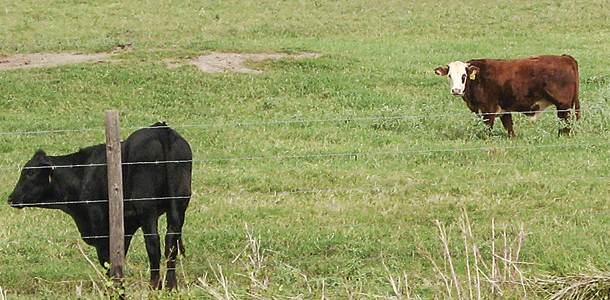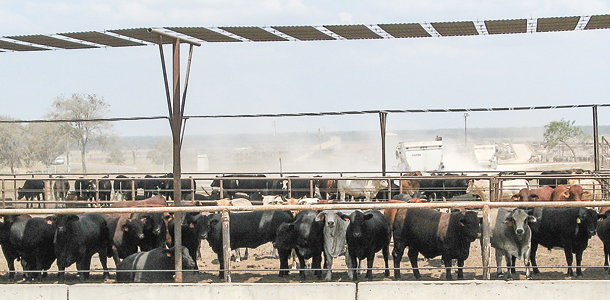Antibiotic metaphylaxis to manage bovine respiratory disease (BRD) in newly received high-stress or recently weaned calves has been a common practice in stocker programs and feedlots.
The beef industry’s use of antibiotics is coming under more scrutiny due to consumer concerns and pressure from activist groups. It is very possible many of the antibiotics cattlemen rely on today will be lost in the future.
To help avoid over-regulation and the loss of valuable pharmaceuticals, cattlemen need to consider how they select and use antibiotics as well as educate the consumer on their needs and benefits.

“The antibiotic issue arose from concerns over development of antibiotic-resistant bacteria in food animals that can become a human health problem,” explains Virginia Fajt, DVM, Texas A&M University.
“Antibiotic residues in food are not necessarily the concern. The United States Food and Drug Administration (FDA) requires residue testing in meat and milk before a pharmaceutical can be registered for sale and use. Toxicological tests are also required to measure its effects on humans."
"Withdrawal periods of treated animals from market are assigned to each product when necessary to allow for residues in meat and milk sufficient time to degrade below possible harmful levels. Length of the withdrawal periods includes wide margins to ensure food safety."
“Antibiotic-resistant bacteria could theoretically be transferred to humans,” says Fajt. “There are several hypothetical steps required for the transfer, and a few of them have been documented through observation and epidemiology studies.
At the present time, there is no conclusive evidence that all of the needed hypothetical steps have occurred in sequence.
“Because of the theoretical risk, activists say use of antibiotics in livestock should be limited,” Fajt continues. “The animal industry states that there is a demonstrated risk to animal health if antibiotics are not available. A compromise between the two groups is the FDA directive that will be going into effect in late 2016. The directive continues to permit the use of antibiotics in feed – but only with veterinarian oversight."

"Most animal pharmaceutical companies are voluntarily withdrawing their antibiotics from over-the-counter (OTC) sales and putting them under the directive. They are also removing the growth-promotant use from their product labels."
"Ionophores will still be available OTC as growth promotants, since they are not used in human pharmaceuticals and their possibility of causing antibiotic-resistant bacteria is remote since they have a very different mode of action.”
The disease complex
“Agents responsible for BRD in cattle are both viral and bacterial,” says Daniel Grooms, DVM, Michigan State University. “Viruses primarily involved in BRD include:
1. IBR-BHV1 – Infectious bovine rhinotracheitis virus-bovine herpes virus
2. BVDV – Bovine virus diarrhea virus
3. PI-3 – Parainfluenza 3
4. BRSV – Bovine respiratory syncytial virus
The main role of these viruses is establishing an environment that is favorable to colonization and replication by pathogenic bacteria resulting in pneumonia.
“Bacteria commonly associated with BRD include Mannheimia haemolytic, Pasteurella multocida, Histophilus somni and Mycoplasma bovis,” adds Grooms. “The involved viruses have been shown to work synergistically with these bacteria in creating more severe BRD.”
“BRD reduces performance, health and carcass quality in stockers and feeders,” says Glennon Mays, DVM, Texas A&M University. “It is the leading cause of morbidity (sickness) and mortality (death) in U.S. cattle."
"Depression, coughing, nasal discharge, lack of appetite and droopy neck and ears are symptoms of BRD. Stress due to weaning, transport, commingling, processing or other factors predisposes cattle to BRD.”
Treatment options
“Research has shown that treating cattle with long-acting antibiotics either just before transport or upon arrival at the feedlot can significantly reduce occurrences of BRD,” reports Curtis Beus, Washington State University. “However, cost and labeling restrictions on these antibiotics preclude their mass usage to prevent BRD."
"If calves with high risk of BRD can be identified prior to shipment, or immediately upon arrival, there is evidence that BRD incidences can be reduced by using recommended long-acting antibiotics. Cattle with high risk of BRD include lightweight, non-preconditioned and commingled calves coming from a sales yard.”
Antibiotic metaphylaxis has been demonstrated to be effective and economical under certain conditions. Pathogenic bacteria in the nose and throat are eliminated or greatly reduced by antibiotics, which lessens the likelihood of calves developing pneumonia.
Bacteria are the only pathogens affected by antibiotics; spread of the viruses is not impacted. If response to antibiotic therapy in sick cattle is poor, a primary viral component is likely to be responsible.
“We try to reduce the need for our clients to employ antibiotic metaphylaxis for BRD control,” says Del Miles, DVM, Veterinary Research Consulting Services LLC. “The range of high-risk animals among our clients is about 15 to 20 percent of total cattle received.”
 Veterinary Research Consulting Services LLC works with feedyards in seven states. Their services include training employees to recognize sick animals, developing treatment protocols and monitoring animal health and welfare.
Veterinary Research Consulting Services LLC works with feedyards in seven states. Their services include training employees to recognize sick animals, developing treatment protocols and monitoring animal health and welfare.
“The average-sized herd in the U.S. is 40 cows,” Miles continues. “A 90 percent calving percentage will yield 36 animals. On the average, 50 percent of the calf crop (18 animals) will be steers and may be marketed."
Based on these numbers, a 150-head lot at the feedyard might contain calves from as many as eight or more sources; therefore, commingling is a necessary practice in the beef industry.
“To help avoid the need for antibiotic metaphylaxis and occurrences of BRD, we try to reduce stress on incoming animals,” says Miles. “We do this by allowing 18 inches of bunk space per animal so that they can all access it at the same time."
"Each animal is provided excessive bedding ground. If calves experience a morbidity spike after several days post-arrival, we run the entire lot into the chute, take their temperature and treat any animals with a temperature in excess of 104ºF. We believe starting high-risk cattle on a low-starch or no-starch ration reduces stress due to reducing the chances of rumen acidosis.”
Antibiotic metaphylaxis remains an important tool for stocker and feeder operations to use in averting serious animal health problems and providing good animal welfare.
Continuing efforts to understand animal stress and to reduce its occurrence will help reduce future employment of antibiotic metaphylaxis, which can positively impact profits. ![]()
Robert Fears is a freelance writer based in Texas.
PHOTO 1: Due to small cow-calf operators, commingling is necessary in the beef industry, so this practice needs to be considered in the design of animal health programs.
PHOTO 2: Normally, BRD occurs within 27 days after arrival at stocker operations or feedlots.
PHOTO 3: Low-starch or no-starch diets help reduce stress of new arrivals.
PHOTO 4: Occurrences of BRD in stockers and feeders can be reduced if cow-calf operators use a veterinarian-recommended vaccination program for respiratory diseases. Photos courtesy of Robert Fears.







